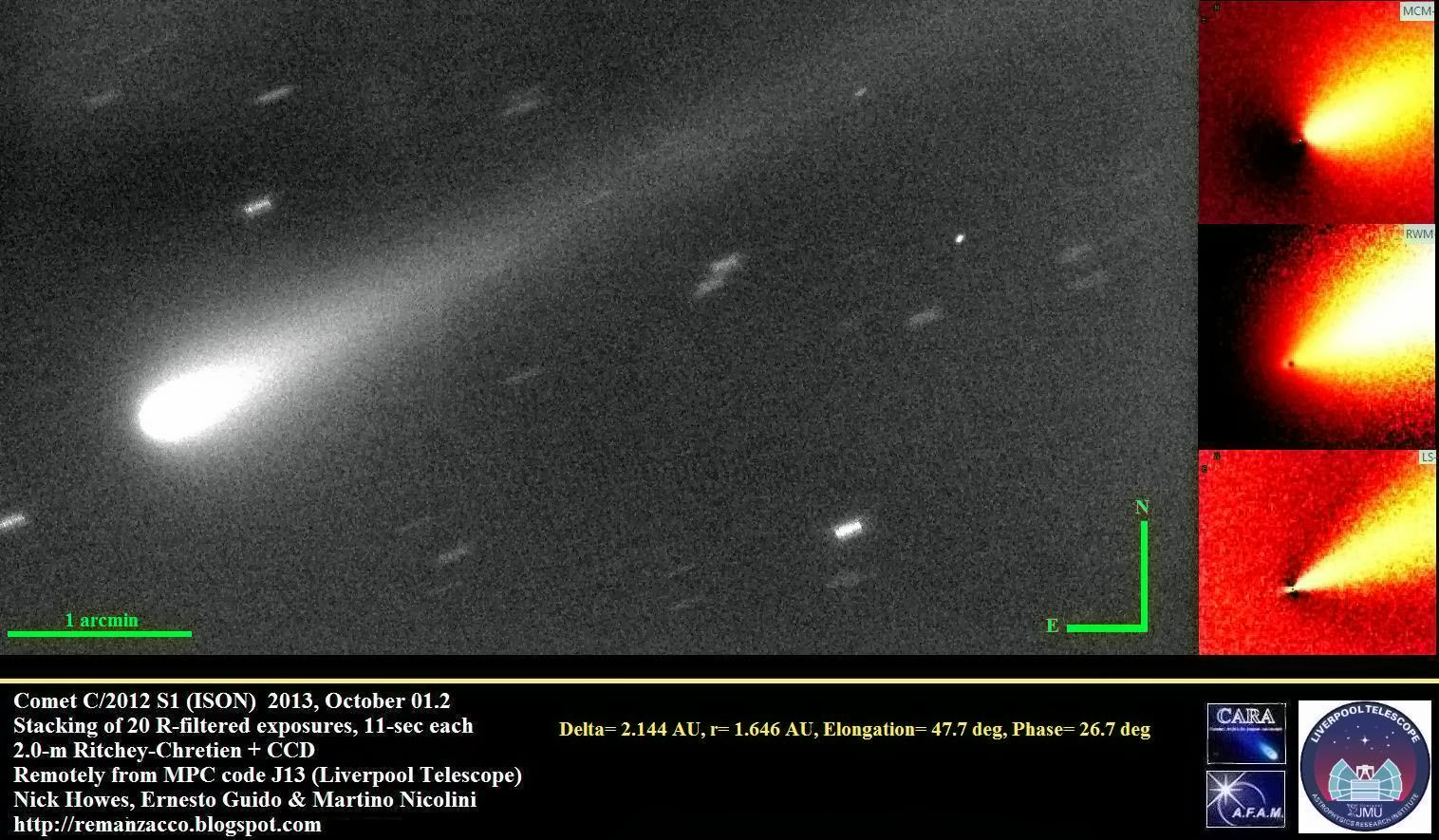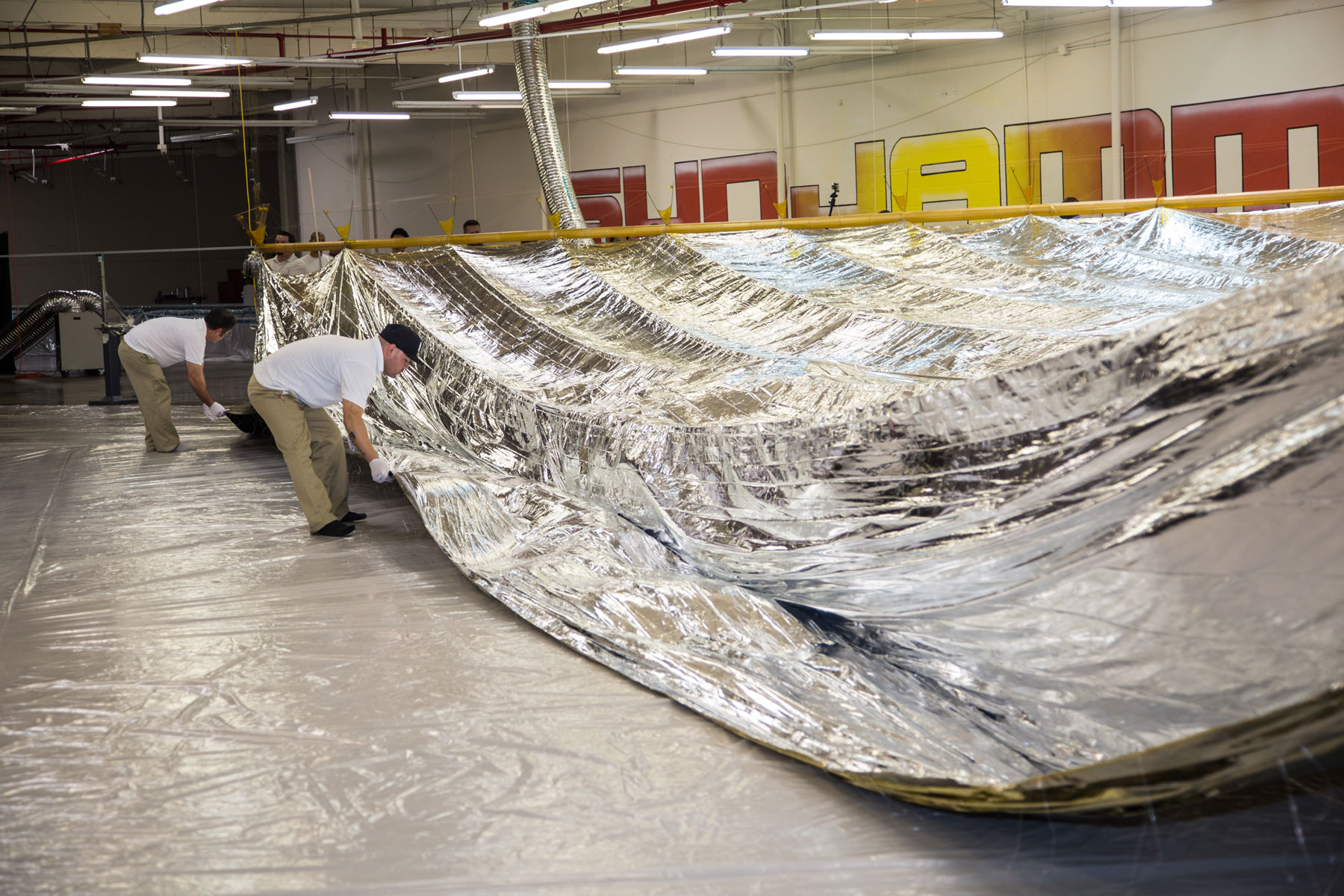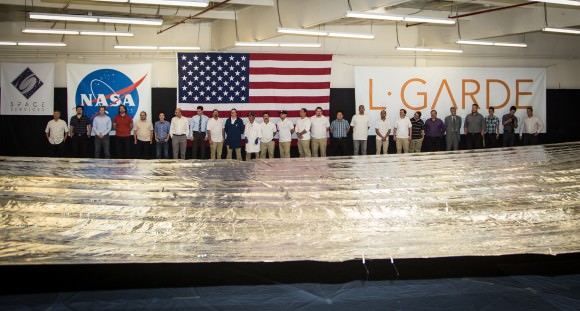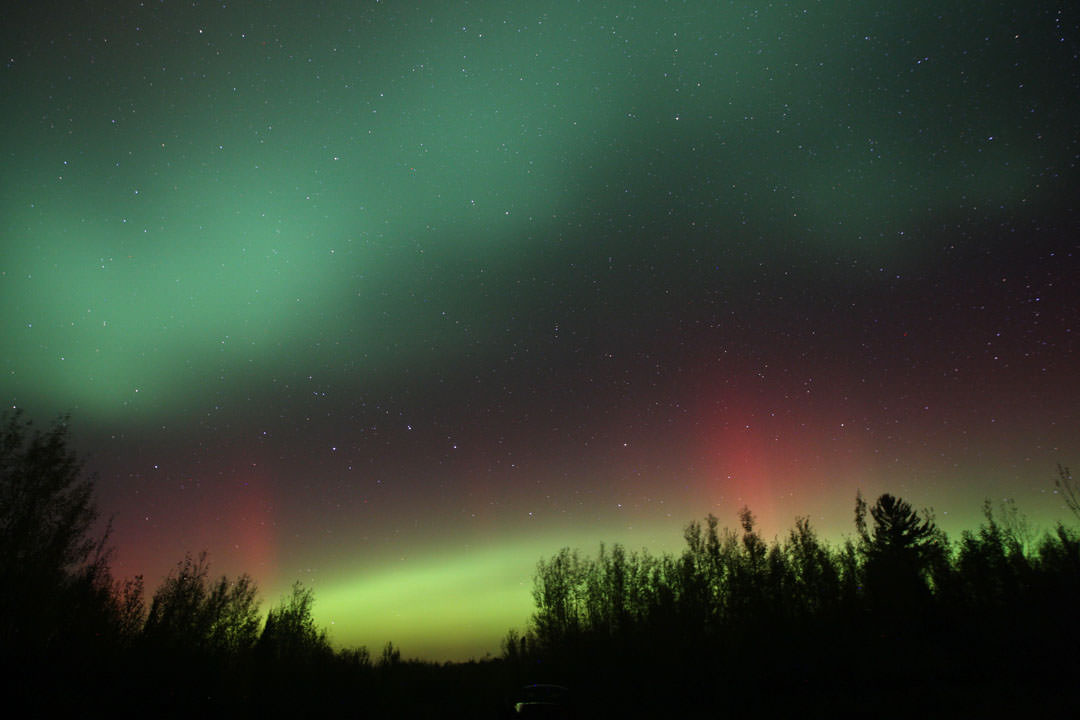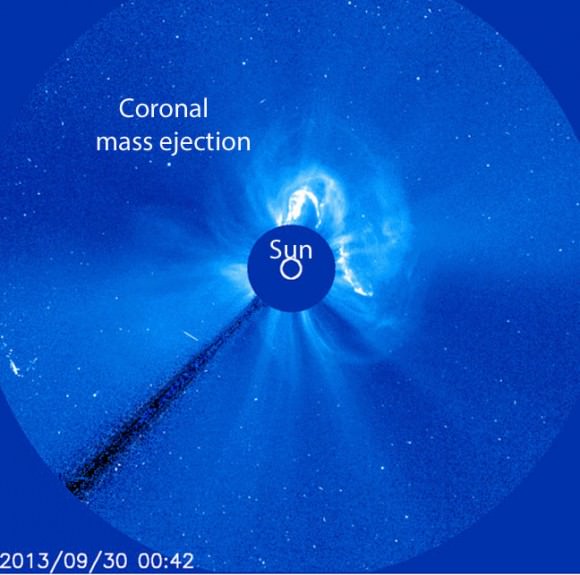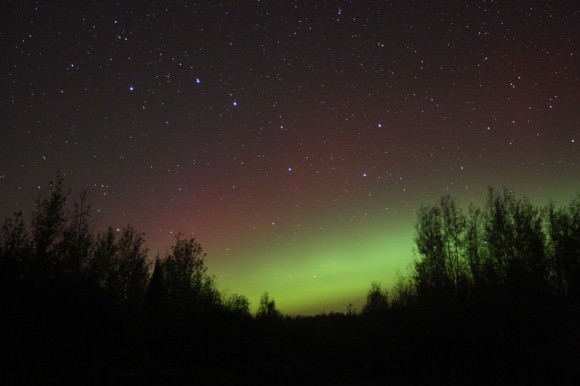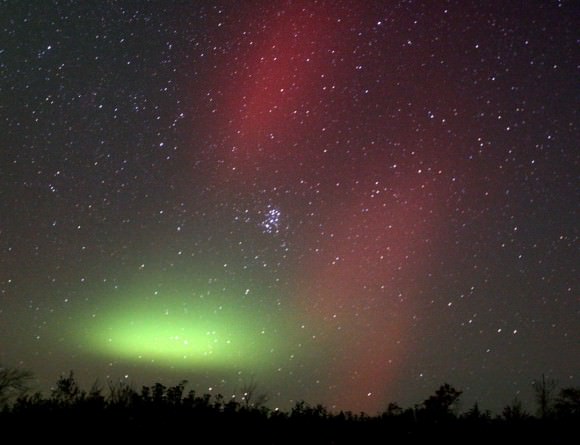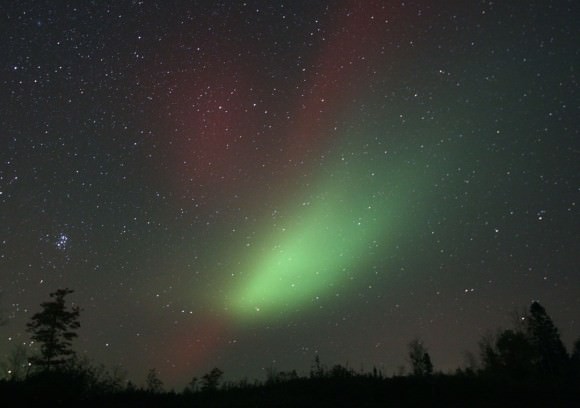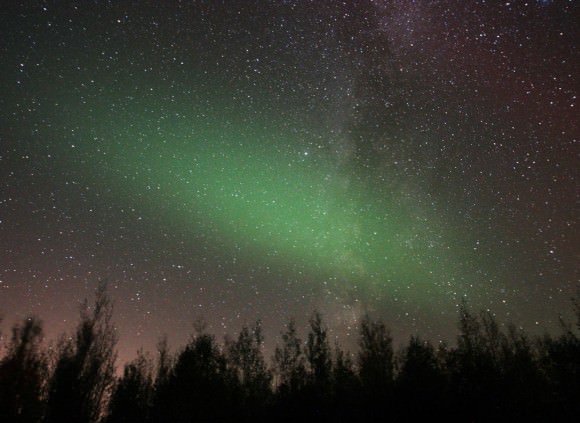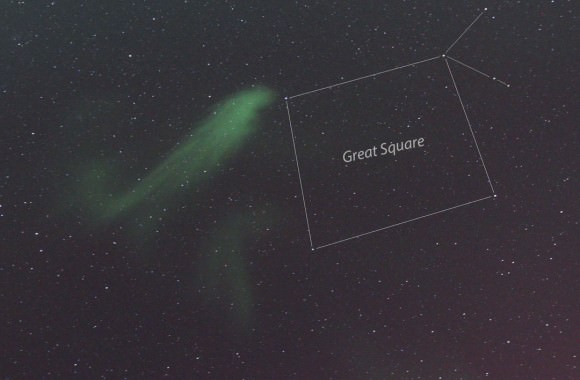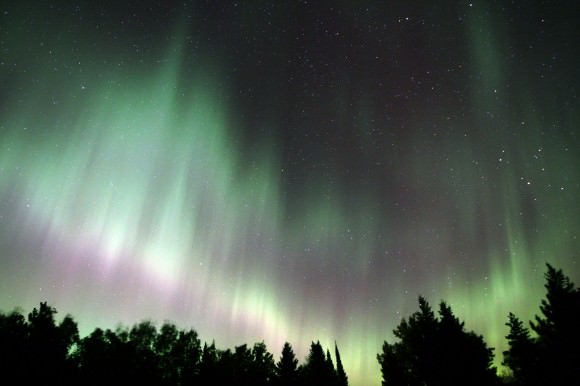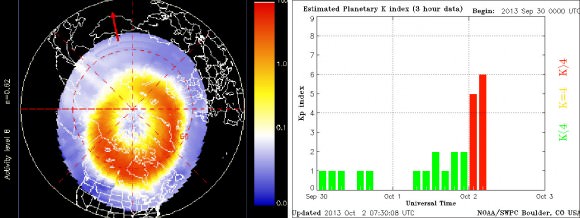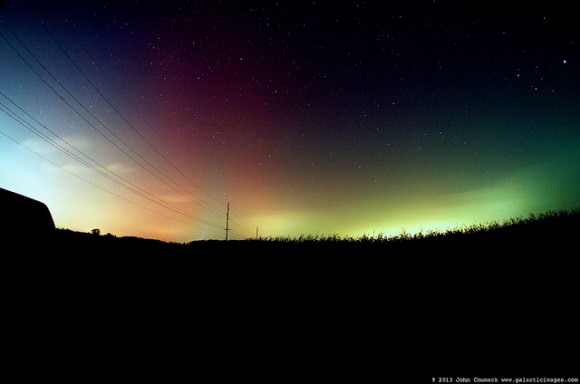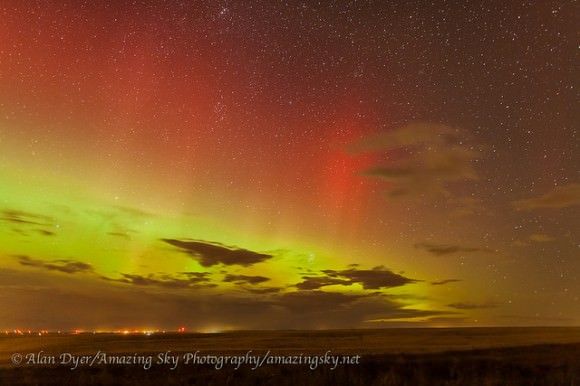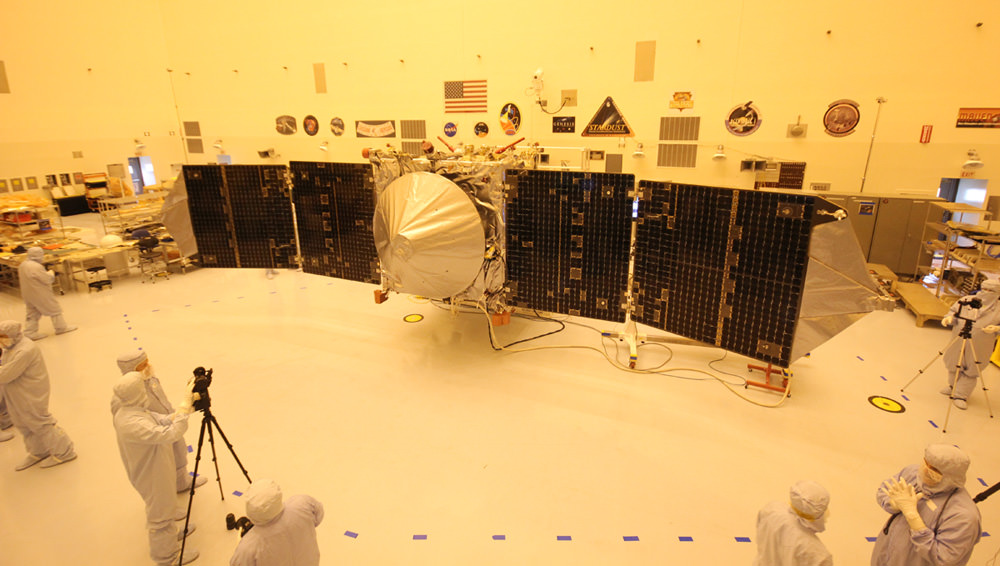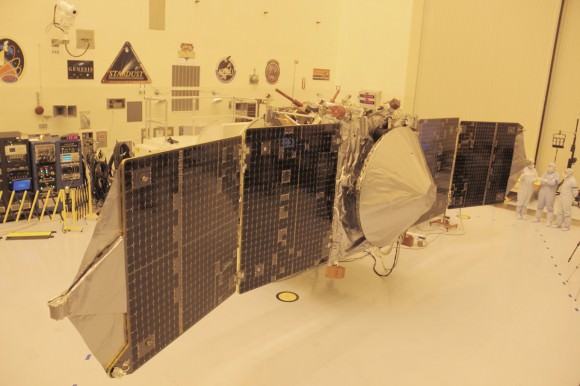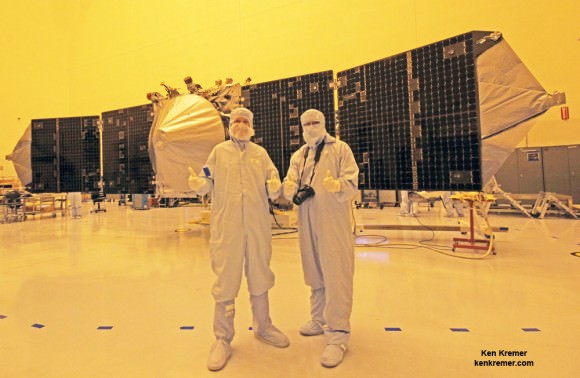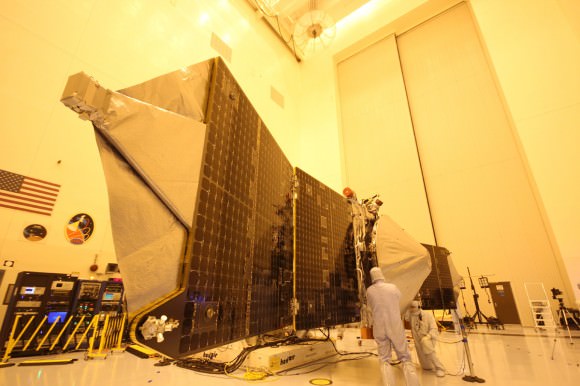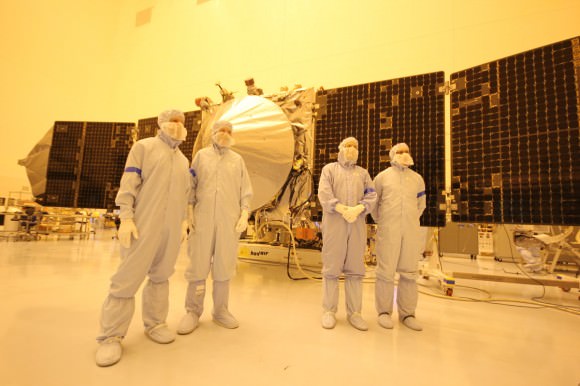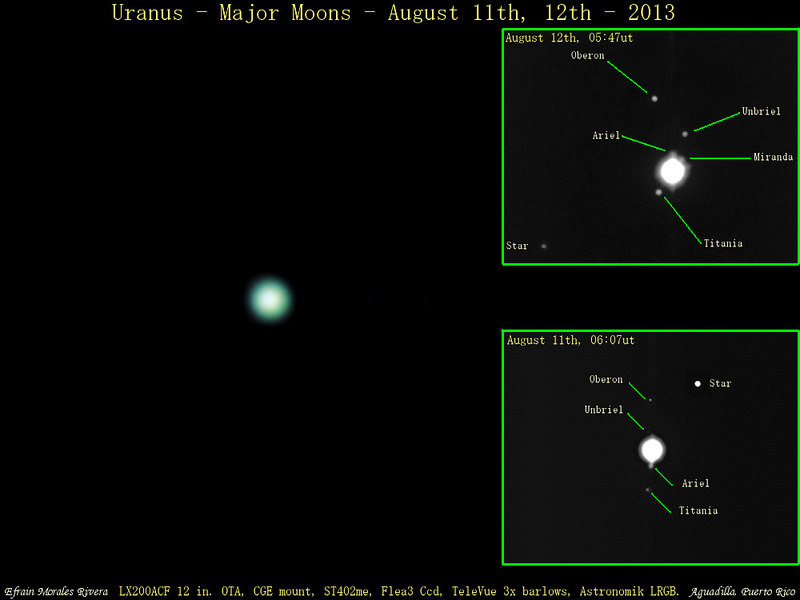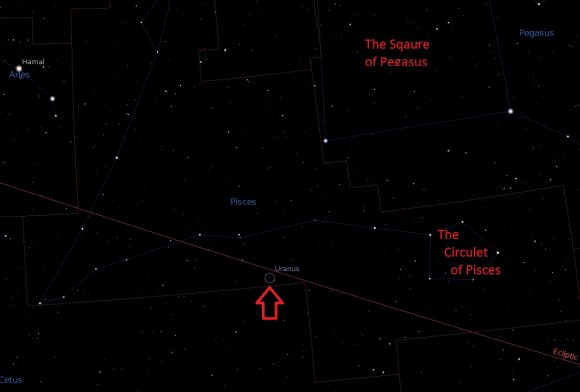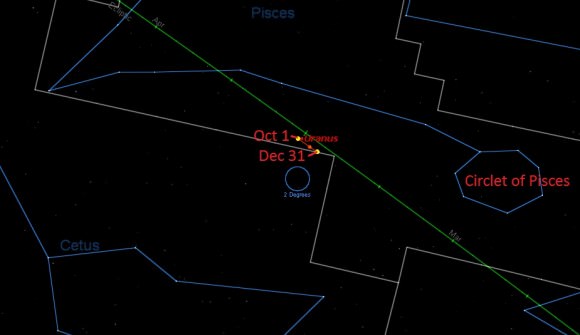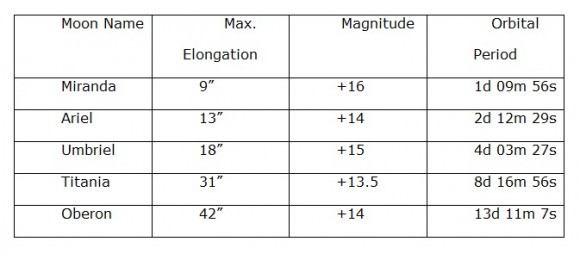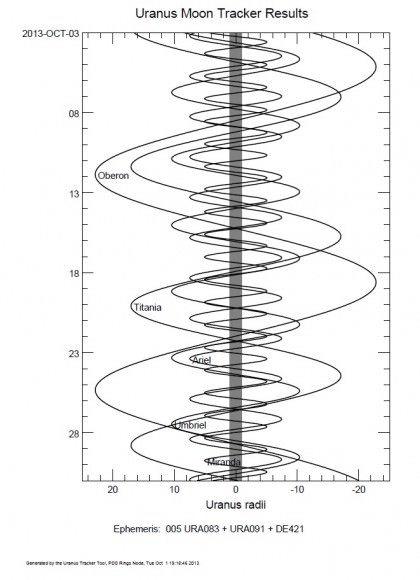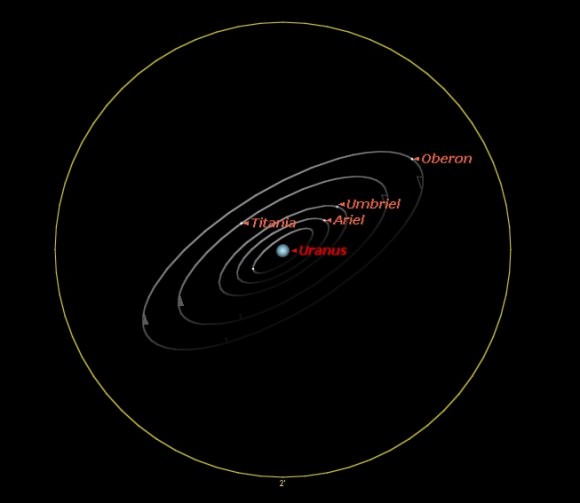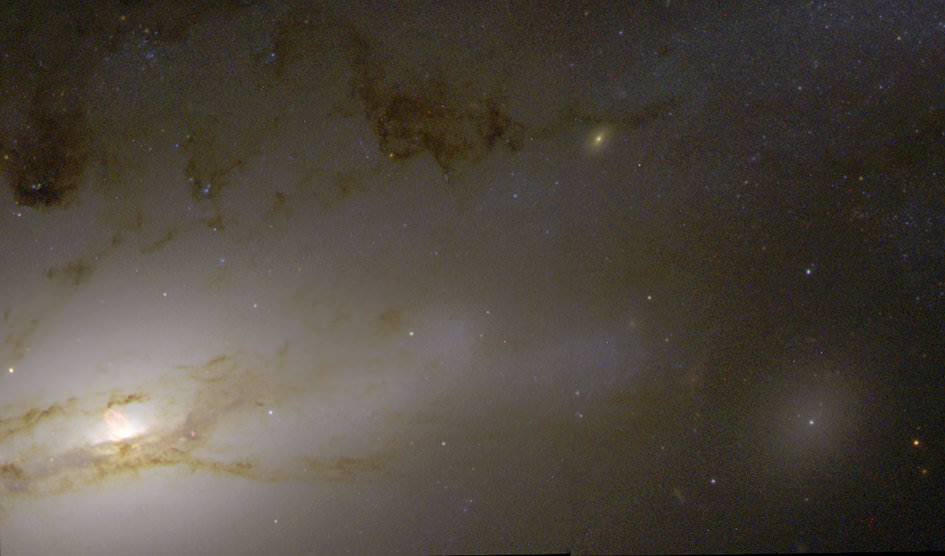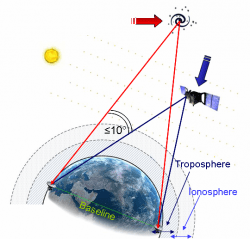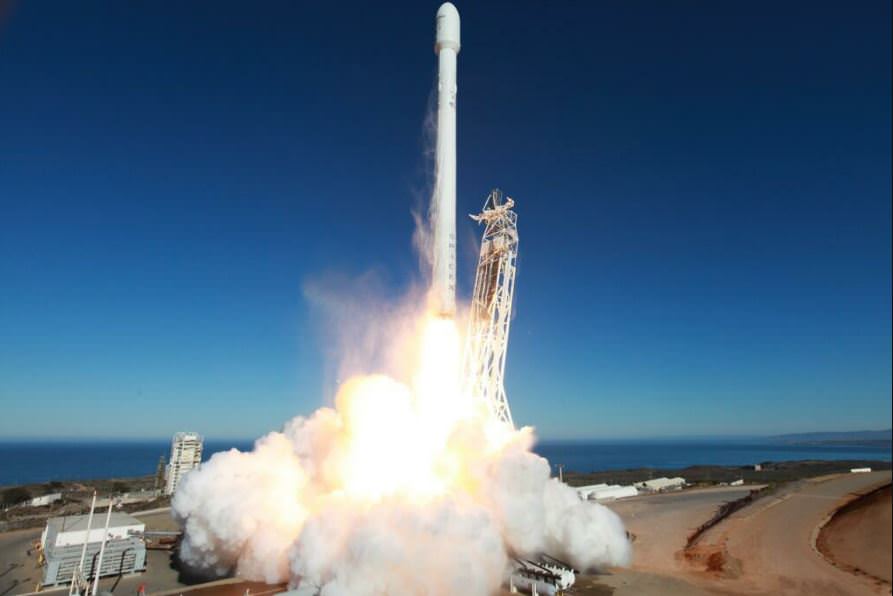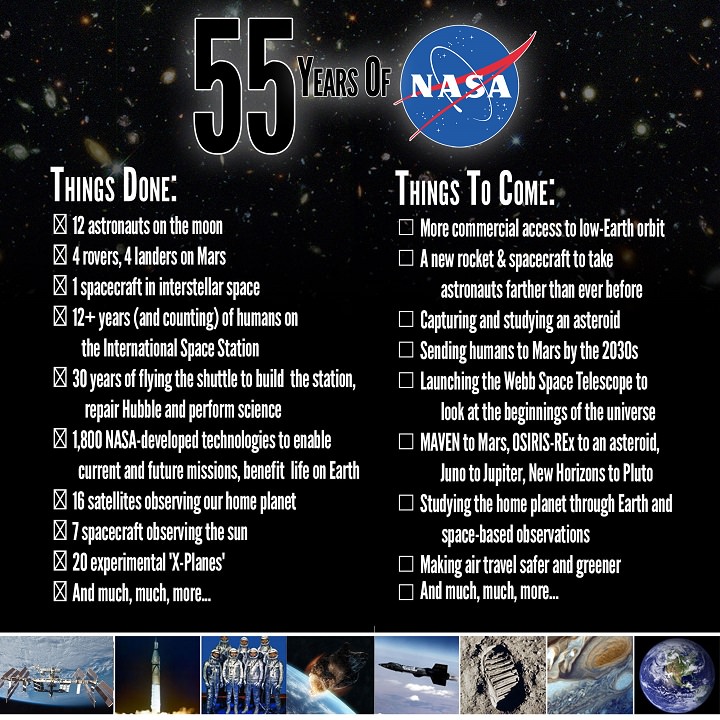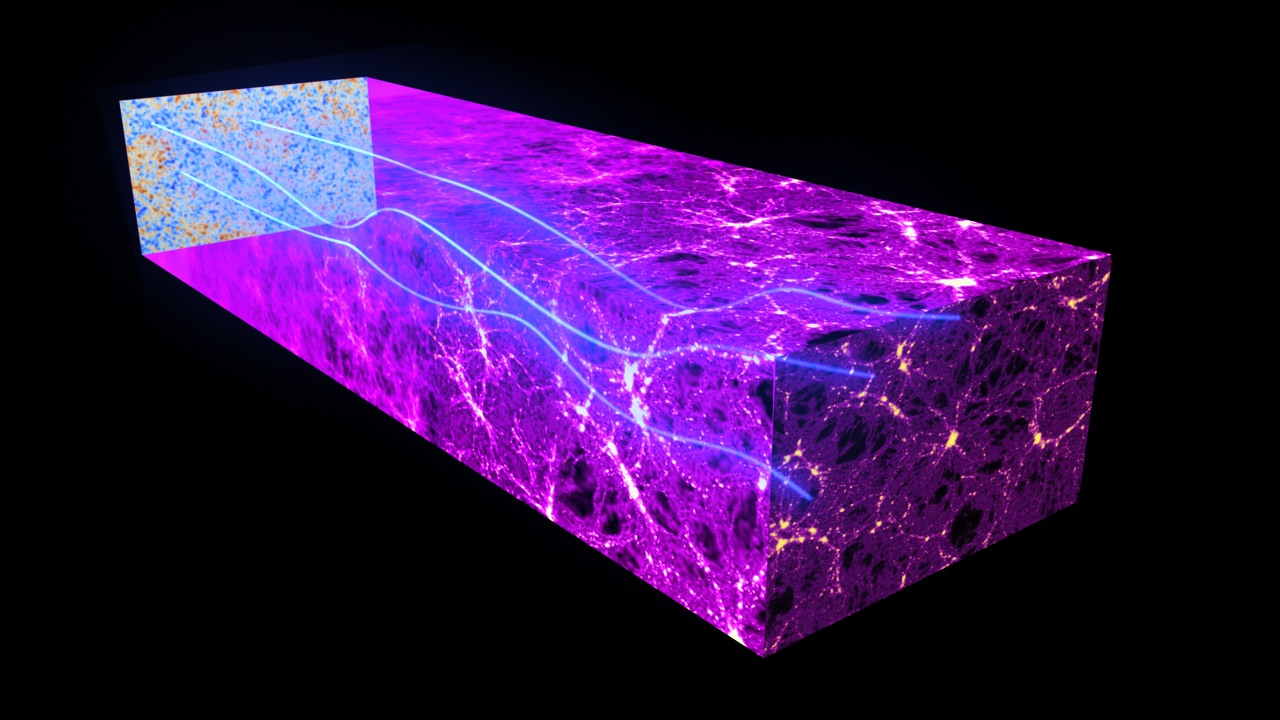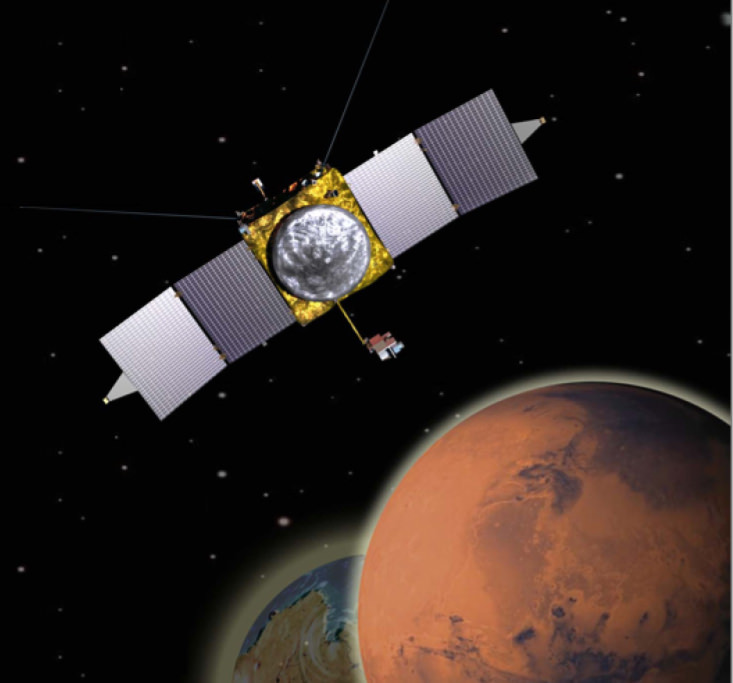Comet ISON made its closest approach to Mars yesterday (October 1, 2013) at a distance of 10.5 million km (6.5 million miles). While we await to find out if attempts to image the comet by spacecraft on the surface (update: those images are in — see them here) and in orbit of Mars were successful, astronomers from Earth were able to capture the two planetary bodies together.
You can see the two planetary bodies together in one image below from Ari Koutsouradis in Maryland, but the Remanzacco Observatory team obtained images of Comet ISON as it passed by Mars using the 2 meter Liverpool Telescope. This main image above consists of a stack of 20 exposures, 11 seconds each.
Ernesto Guido, Nick Howes and new team member Martino Nicolini produced this image, showing a “well developed coma and tail measuring at least 3 arc minutes,” the trio wrote on their website.
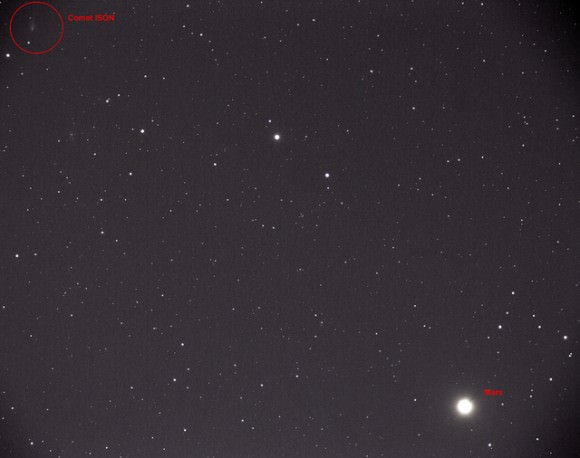
This image, directly above, taken early this morning by Ari Koutsouradis in Maryland, shows both Mars and the comet in one image, although it highlights the relative distance between the two. Koutsouradis said via Flickr that the comet was not visible with an eyepiece on the scope, but the image stack did manage to bring it out.
During the observations by the Remanzacco team, they wanted to look to see if they could discern additional jet structures on the comet, which had been reported by other observers. Howes told Universe Today, however, the are still looking at their observations to analyze this.
“There was some debate as to the existence of additional jet structures on the comet,” Howes said via email. “Our data analysis seems to show that some reports of this were possibly spurious, however, our one process does seem to show a possible small jet, which a 2m class instrument would be able to detect. Our analysis is undergoing additional review and peer checking with our collaborators in the USA. The scientific analysis of this comet and its inner coma is ongoing, and being monitored closely.”
Update: Later in the day on October 2nd, The Remanzacco team obtained analysis from their U.S collaboration partners. Using their data from the 2m Liverpool telescope, and after processing by Dr. Nalin Samarasinha of the Planetary Science Institute, they have conclusively confirmed a sunward facing feature on Comet ISON. A dust feature was detected by Nalin and Howes’ team in previous ISON observations —see one of our previous articles for more details — though they are not sure if this and the new jet feature are connected.
Using Samarasinha’s own modeling and processing algorithms, the PSI team validated the processing performed by the Remanzacco team which showed a small, but discernible forward-facing feature on the comet. Dr. Samarasinha, a world leading cometary scientist, believes this to be a real feature and not the result of processing artifacts, given the very good signal-to-noise of the data.
“As we said earlier, we suspected one of the processing routines we used showed a real feature, but wanted to be 100% sure with a peer review and further analysis,” said Guido, “and the PSI team has independently shown this.
Here is Dr. Samarasinha’s image processing, using his own division by azimuthal average process to the left, and the Remanzacco team’s MCM (median coma model) process image to the right. The pixel scale is 0.3″/pixel:
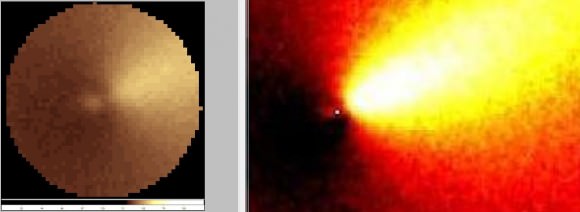
Howes added that their team will continue to monitor ISON as it approaches perihelion (closest approach to the Sun) on November 28.
“Our team has an ongoing programme of observations with a range of telescopes around the world,” he said, “including the iTelescope Network, the LT on La Palma and also with schools on the Faulkes Telescope, in support of two U.S observatory teams. The LT and iTelescope network is currently well placed to take these early observations as the comet approaches perihelion.”
If the comet survives its close pass by the Sun, it will pass closest to Earth on December 26, about 64 million km (40 million miles) away.
Meanwhile, even though NASA had to curtail many of its activities due to the government shutdown, many missions such as the Mars Reconnaissance Orbiter and the Mars Science Laboratory rover Curiosity were still up and running because they are run out of the Jet Propulsion Lab, which runs as a contractor to NASA, and are not government facilities. (JPL is privately run by the California Institute of Technology (Caltech), and the Applied Physics Lab, which operates the MESSENGER and New Horizons missions, is run by Johns Hopkins University, also a contractor to NASA. They’ll be able to operate as long as the money they have received from NASA previously holds out. (So, keep your fingers crossed for a short government shutdown.)
Therefore, imaging attempts by MRO and MSL of Comet ISON from Mars went ahead as scheduled, and we should be hearing how those attempts fared as soon as the images can be received back on Earth and processed. The word from the HiRISE camera team via Twitter is that they were able to image the comet. Stay tuned!

Here’s an enlargement of additional observations by the Remanzacco team, showing the inner coma of Comet ISON. Their explanation:
In the image (above) you can see 3 different elaborations of the ISON inner coma. The first panel on the left is a Larson-Sekanina filter. In the middle panel elaboration with the MCM filter creates an artificial coma, based on the photometry of the original image, and subtract the original image itself in order to highlight the internal zones of different brightness that are very close to the inner core and that would normally be hidden from the diffuse glow of the comet. While the last panel on the right is the elaboration with filter RWM – 1/r theoretical coma subtraction.

